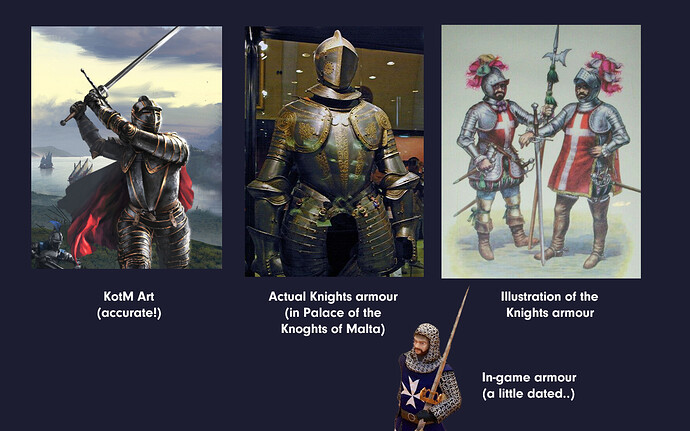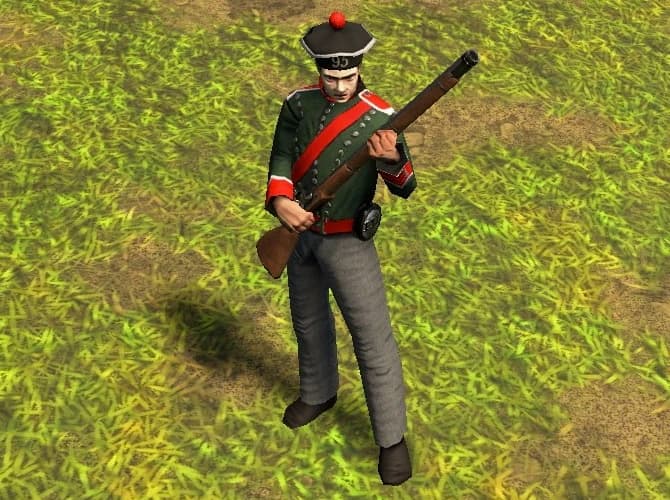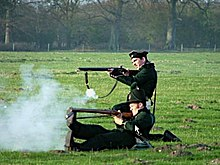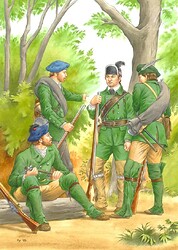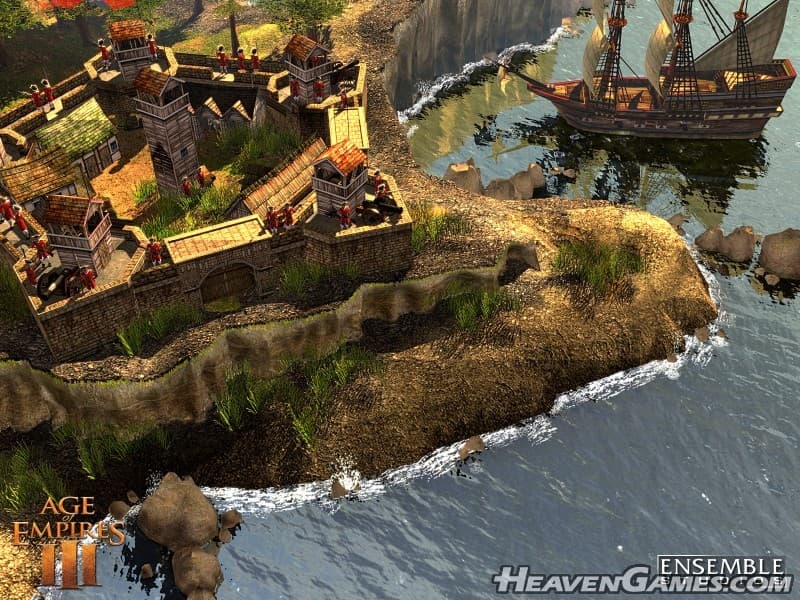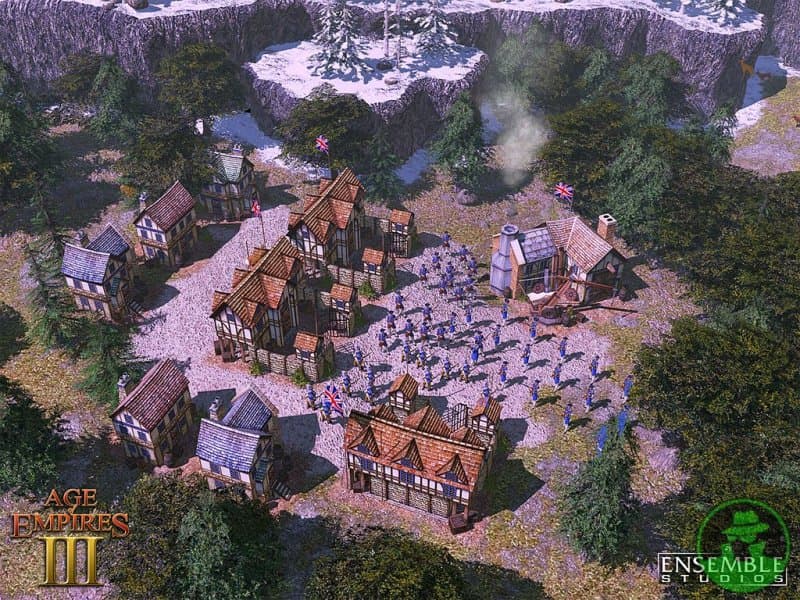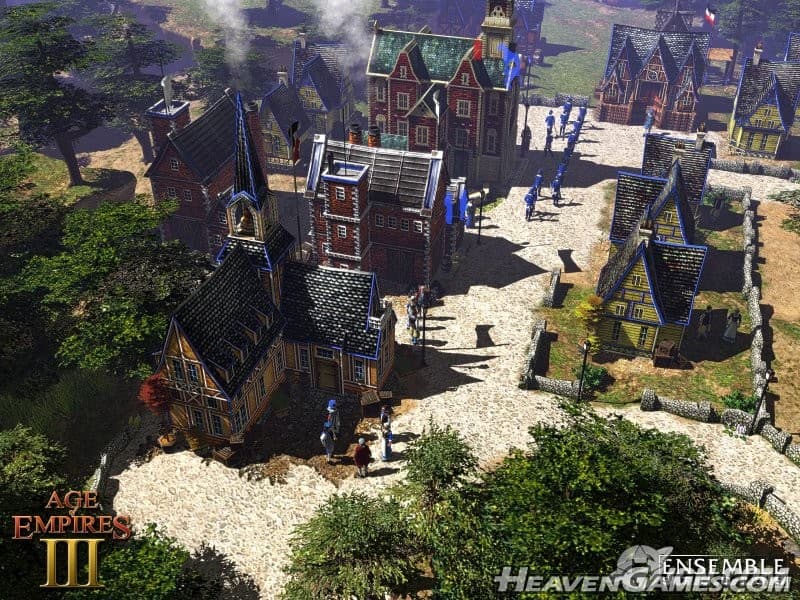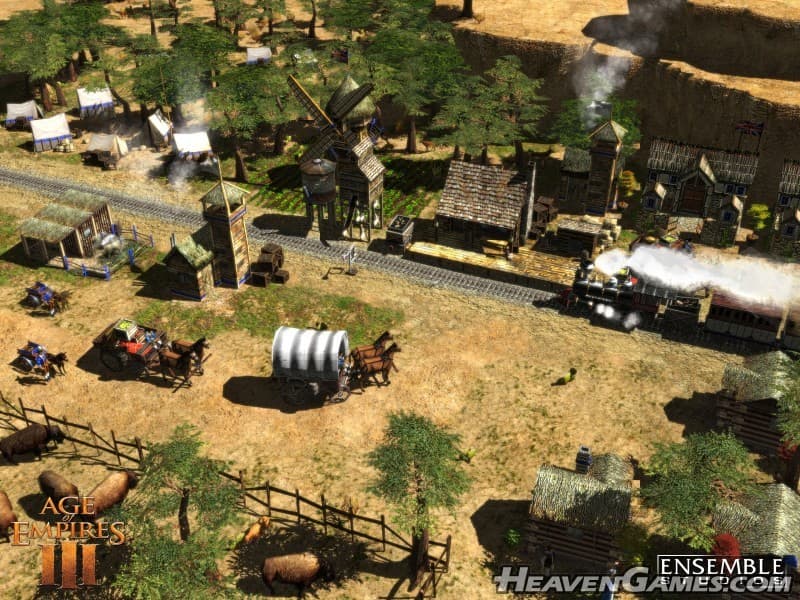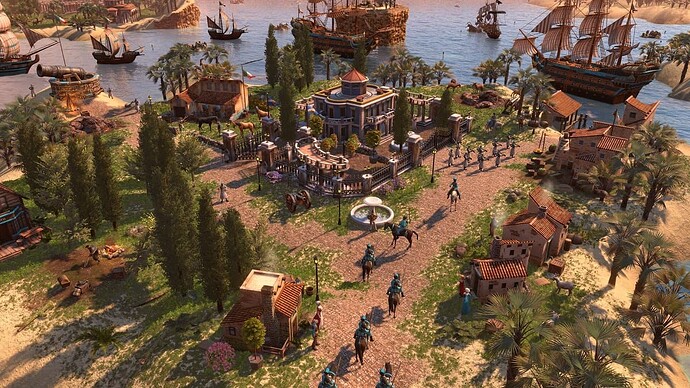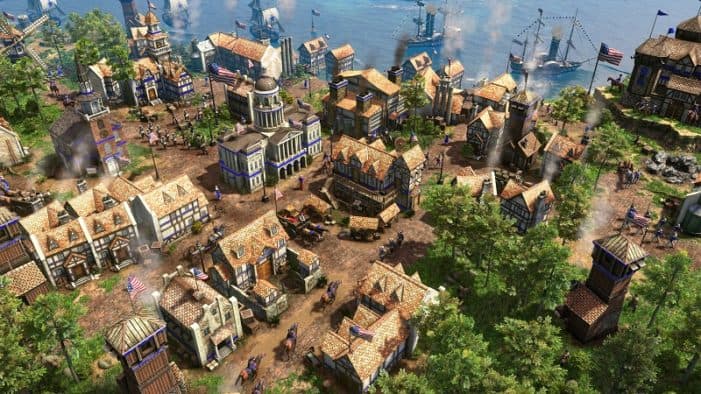While the unit’s name refer to the Roger’s Rangers, the “95” on its hat and the uniform of the Imperial Ranger match the uniforms of the British Army’s Rifle Brigade, more commonly known as the 95th Rifles or Green Jackets, which served from the dawn of the 19th century to the present day, and were featured in the Bernard Cornwell Sharpe novels and television series.
The Rifle Brigade (The Prince Consort’s Own) was an infantry rifle regiment of the British Army formed in January 1800 as the “Experimental Corps of Riflemen” to provide sharpshooters, scouts, and skirmishers. They were soon renamed the “Rifle Corps”. In January 1803, they became an established regular regiment and were titled the 95th Regiment of Foot (Rifles). In 1816, at the end of the Napoleonic Wars, they were again renamed, this time as the “Rifle Brigade”.
The unit was distinguished by its use of green uniforms in place of the traditional redcoat as well as by being armed with the Baker rifle, which was the first British-made rifle accepted by the British Army in place of smooth-bore muskets. The 95th was the first regular infantry corps in the British Army to be so armed. They performed distinguished service in both the First and Second World Wars. Post war, in 1958 the regiment formed part of the Green Jackets Brigade as 3rd Green Jackets and was amalgamated with the 1st Green Jackets (43rd and 52nd) and the 2nd Green Jackets (King’s Royal Rifle Corps) to form the Royal Green Jackets on 1 January 1966.
Four months after its formation, the Rifle Corps was judged ready for its first operation. On 25 August 1800, three companies, under the command of Lieutenant-Colonel William Stewart, spearheaded a British amphibious landing at Ferrol, Spain, where the Rifles helped to dislodge the Spanish defenders on the heights. Despite this, the expedition was defeated and withdrew on 26 August 1800.[2] In April 1801, one company of the Experimental Corps of Riflemen, under the command of Captain Sidney Beckwith, took part in the British victory at the Battle of Copenhagen, as marksmen aboard Royal Navy ships that were under the overall command of Vice-Admiral Horatio Nelson. During the battle, the Rifle Corps suffered one lieutenant killed, its first officer to fall, and two other ranks killed and six wounded, some of whom died later.[5]
In 1802, the Rifle Corps was brought into the line of the British Army as the 95th Regiment of Foot.[6] In 1803, the 95th moved to Shorncliffe Army Camp, Kent, where it underwent light infantry training, along with the 43rd and 52nd Regiments of Foot, under the tutelage of Manningham and Sir John Moore; the latter, like the 95th, would gain fame during the Peninsular War.[7] In 1805, a 2nd Battalion was raised at Canterbury, Kent, and later in the year the 1st/95th deployed to Germany as part of a British expedition, under the command of Lord Cathcart, designed to liberate Hanover from occupation by France.[8] The 95th subsequently formed the advance guard on the way to Bremen. In February 1806, the 95th formed the rearguard for the withdrawal to Cuxhaven and subsequently returned home to the UK.[8]
In October 1806, five companies of the 1st/95th and three companies of the 2nd/95th departed for Spanish-controlled South America, Spain then being allied with France. It was part of a second invasion force that was designed as reinforcements for the first invasion against Buenos Aires, launched earlier in 1806 by Sir Home Popham without the Government’s knowledge.[8]
The 2nd/95th, as part of Brigadier-General Sir Samuel Auchmuty’s force, took part in the siege and subsequent storming of Montevideo, in what is now Uruguay, and which saw Montevideo captured on 3 February 1807, after clearing the surrounding area of Spanish troops in January.[9] The 95th subsequently saw action at Colonia against a Spanish force that had crossed from Buenos Aires; the Rifles held off the force until it could be repulsed, with the 95th gaining much praise from Auchmuty for their part in the defeat of the Spanish force. The 95th subsequently saw action in June at San Pedro where they, the 40th and light companies, fought against the Spanish force that had crossed from Buenos Aires and defeated them.[9]
Lieutenant-General John Whitelocke, the newly arrived overall commander, subsequently launched an ill-advised and mismanaged assault on Buenos Aires in which the companies of both battalions of the 95th were involved as part of the Light Brigade, commanded by Robert Craufurd. During the assault on Buenos Aires on 5 July, the 95th and the rest of the British force suffered heavy casualties in bitter fighting to capture the city. The Light Brigade had suffered casualties so heavily that they had to take refuge in a church and were surrendered soon after Whitelocke surrendered his force. After Whitelocke negotiated the withdrawal of British forces, the men were released and they returned home later that year. The 95th would go on to fight for near the entirety of the Peninsular War in Spain. In the aftermath of the disastrous expedition, Popham and Whitelocke were court-martialed, with Popham reprimanded and Whitelocke dismissed from the Army
The remaining companies of the 95th were involved in the expedition to Denmark that year. They took part in the Battle of Copenhagen in 1807 as part of Arthur Wellesley’s brigade. The expedition, commanded by Lord Cathcart, was intended to capture the Danish Fleet to prevent it falling into the hands of France. The expedition proved to be a thorough success with the Danish Fleet being captured at which point the British withdrew.[8] In 1808 the 1st/95th took part in an expedition to another Scandinavian country, Sweden, an expedition that was commanded by Sir John Moore and designed to help Sweden during their war with Russia.[8] However, once they had reached Gothenburg in May, the troops remained aboard the anchored ships for two months due to a misunderstanding between the British and Swedish governments and returned to Britain.[10]
In August 1808 the 2nd/95th was part of the immediate forces sent in the Portuguese expedition initially commanded by Sir Arthur Wellesley and covered the landings at Mondego Bay (Figueira da Foz).[8] On 15 August they had the distinction of firing the first shots of the Peninsular War during a skirmish at Óbidos against the French, but also unfortunately suffered the first British officer fatality of the war, a Lieutenant Ralph Bunbury.[11] The 95th, as part of 6th Brigade which included the rifle armed 5th/60th Foot, took part in the Battle of Roliça, the first pitched battle of the war, on 17 August 1808.[8] Rifleman Thomas Plunket of the 1st Battalion, 95th Rifles, shot the French General Auguste François-Marie de Colbert-Chabanais at a range of up to 800 yards (730 m) at the Battle of Cacabelos on 3 January 1809.[12]
The 1st battalion was part of John Moore’s campaign which ended with evacuation after the [Battle of ######################################################### ## 16 January 1809.[8] The majority of the 1st battalion was rested and refitted in the UK, though a few small detachments of the 95th were stranded behind which then formed up with other detachments as part of a defence force (1st Battalion of detachments) in Portugal.[13] The 1st returned to the peninsula a few months later in May 1809 and in July was force marched in an attempt to arrive with the main force for the Battle of Talavera but despite covering a notable distance they arrived on 29 July 1809, just after the battle.[14]
After the depletion suffered at Corunna, the two battalions of the 95th based at Hythe in Kent were made up to a strength of 1,000 men each. However, so many volunteers came forward to join the regiment that permission was granted to raise a third battalion in 1809.[15]
The regiment had already become so famous and popular, that not only were the deficiencies filled up in a very short time, but more than a thousand volunteers presented themselves beyond the numbers required. It was therefore resolved by the Authorities to add a 3rd Battalion to the regiment.
— Sir William Cope[16]
The third battalion joined the Peninsular Army in 1810. Thereafter the three battalions of the 95th fought in numerous major battles and skirmishes during the Peninsular War as part of the elite Light Division, including the Battle of Bussaco in September 1810 and the sieges of Ciudad Rodrigo in January 1812 and Badajoz and March 1812 as well as the Battle of Vitoria in June 1813.[8] At the Battle of San Marcial in August 1813 a company of the 95th Rifles under the command of Captain Daniel Cadoux held off an entire French division at Vera before withdrawing.[17] The regiment also took part in the Battle of Nivelle in November 1813.
The three battalions had been dispersed to various locations with the abdication of Napoleon and the total French defeat in 1814. The majority of the regiment’s companies were sent back to England for rest and refitting while several companies had been retained in north-east France at Leuze, Aisne under General Thomas Graham.[8] Five companies of the 3rd battalion were in North America, having been sent in late 1814 to participate in the final stages of the War of 1812.[8] With the return of Napoleon from exile, all of the companies in England crossed the channel and landed in Belgium in May 1815, joining with those already present, so that the entire regiment, bar the five companies still in America, became part of Wellington’s Anglo-Dutch army. The first battalion went on to fight at the Battle of Quatre Bras on 16 June 1815, while all three battalions would fight at the Battle of Waterloo on 18 June 1815.[8]
At the end of the Napoleonic Wars, the size of the British Army was reduced; in line with precedent the more recently formed regiments were disbanded first. The unique skills of the 95th were considered too valuable to lose so the 95th, having seen distinguished service in the Napoleonic Wars, was taken out of line of the British Army and became the “Rifle Brigade” on 23 February 1816 (the number was reassigned eight years later to the newly formed county regiment of the 95th (Derbyshire) Regiment of Foot).[18] The Duke of Wellington became Colonel-in-Chief of the regiment in 1820 and served until his death.[6]
In 1852 HRH Prince Albert, the Prince Consort took over the role of colonel-in-chief.[6] When the Crimean War broke out in 1853 the Rifle Brigade sent two battalions which fought at the Battle of Alma, where one of the battalions led the advance across the Alma River in September 1854. The regiment also saw action at the Battle of Inkerman in November 1854 and at the Siege of Sevastopol in winter 1854. Eight members of the regiment were awarded Victoria Crosses during the Crimean War.[19] The regiment was deployed again as part of the Indian Rebellion and saw action at the Siege of Lucknow in autumn 1857.[20] It was granted the title “The Prince Consort’s Own Rifle Brigade” in honour of its colonel-in-chief on 17 January 1862.[21]
In 1866, Private Timothy O’Hea of the 1st Battalion, was awarded the Victoria Cross for an act of bravery in peacetime, while his unit was stationed in the Province of Canada. On 9 June 1866, at Danville, Canada East, on the main railway between Montreal and Quebec City, a fire broke out in a car containing 2,000 pounds (910 kg) of ammunition. Despite the extreme danger, O’Hea took charge of extinguishing the fire and saved many lives.[22]
The regiment also took part in the Battle of Ali Masjid in November 1878 during the Second Anglo-Afghan War, the Mahsud Waziri expedition in 1881, the Third Anglo-Burmese War in 1885, the Fourth Anglo-Ashanti War in 1895 and the Mahdist War in 1898.[23]
The 1st and 2nd Battalions were both deployed to South Africa in 1899, at the outbreak of the Second Boer War (1899–1902). The 1st Battalion saw action at the Battle of Colenso in December 1899 and Battle of Vaal Krantz in February 1900. The 2nd Battalion took part in the Siege of Ladysmith in late 1899 and early 1900.[24] Both battalions stayed in South Africa until the end of the war. 367 officers and men of the 1st battalion left Cape Town on the SS Orissa, which arrived at Southampton in late October 1902, when the battalion was stationed at Portsmouth.[25] 990 officers and men of the 2nd battalion left Port Natal on the SS Malta in September 1902 for a new posting in Egypt.[26] The 5th, Militia Battalion, was embodied in 1900, and served in South Africa until 700 men of the battalion returned home on the SS Avondale Castle in September 1902.[27]
In 1908, the Volunteers and Militia were reorganised nationally, with the former becoming the Territorial Force and the latter the Special Reserve;[28] the regiment now had three Reserve but no Territorial battalions.
![]()
